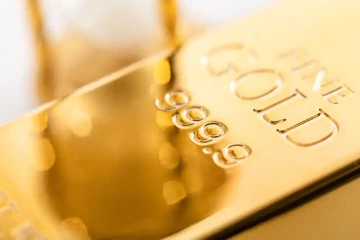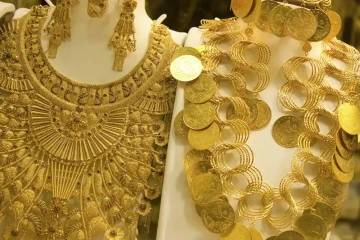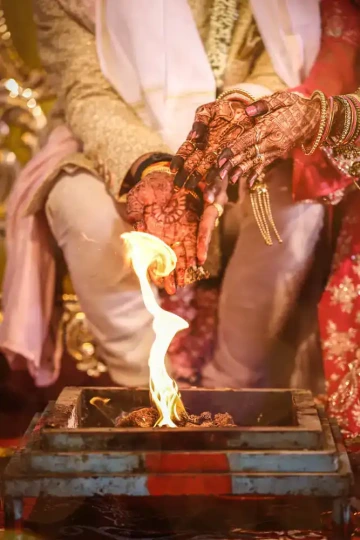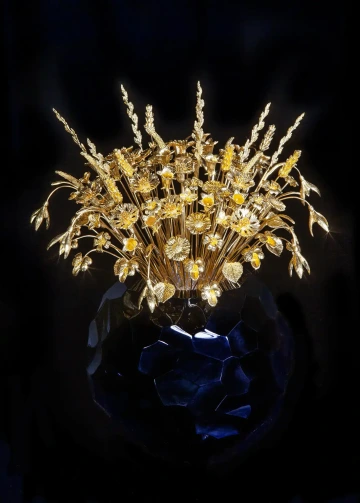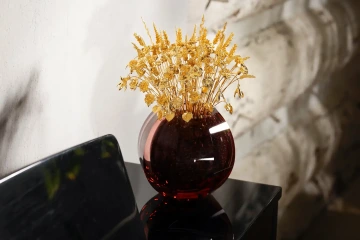Guide to Jewellery and Decorations in 24K Gold
December 18, 2024
It’s the combination of purity, beauty, and value that gives jewellery and decoration of 24-carat gold its special status; a sheen of luxury, craft, tradition, and history. This guide isn’t concerned with gold coins or investment bars, rather with jewellery and decoration made of the metal - a marginal topic in Europe but one all the more interesting - and with a unique Czech manufacturer of jewellery flowers made from fine gold, meant as special gifts and luxury decorations.
Beauty and international currency in one
Jewellery and international currency
Jewellery or decorations made of fine gold are simultaneously works of art and an international currency. Their price, regardless of any value in terms of craftsmanship, is determined continuously by the international market and transparently exchanged anywhere in the world.
Fine gold is 24K gold of the corresponding 99.9% fineness. Some manufacturers (primarily mints and Asian producers) claim even greater fineness but any gold of greater than 99.9% fineness is considered 24K gold.
Natural gold is classified as “impure” because it contains traces of silver, copper, or other metals. It’s not technologically possible to make 100% fine gold. The highest degree of fineness is 99.9999 % (the so-called “six-nines fine”) and was achieved by an Australian mint.
Advantages and disadvantages of 24ct gold
The ease of exchange is one of the properties which put 24ct gold above other golden jewellery. Others include its charming, intense orange-yellow colour which remains constant and maintains stable shine. 24ct gold is non-reactive and resistant to changes in colour.
The disadvantages may include softness because unless there are modern manufacturing methods involved, pure gold is liable to scratching or bending which makes it an unsuitable choice for everyday jewellery. Those admiring and manufacturing products of 24ct gold claim such products can be easily worn if made and maintained properly. And add that jewellers’ preference for 14 or 18ct gold has a drawback as well - the metal’s hardness is increased by diluting the content of gold and thus its inherent value. This shifts the price premium into design and craftsmanship.
To clarify, traditionally made 24ct jewellery is not suitable for everydy wear as there is a great risk of scratching and deformation. We recommend either to utilise the beauty of fine gold in jewellery meant for special occasions (e.g. wedding jewellery) or home décor, or to choose 24ct jewellery made by modern methods (learn more about 5G hard gold below). Softness is not an issue with objet d'art, exhibited in a space. In fact, the softness creates opportunities for making impressive luxury decorations.
Some also mind the yellow metal’s darker, shinier colour. Additionally, the manufacturing is more expensive. Fine gold contains almost twice as much gold as 14ct gold does, and currently sells at 2.500 USD per ounce (2.000 CZK/g).
Jewellery and objet d'art of 24K gold
Jewellery in the Western and Eastern world
Manufacturing jewellery and decorations of 24K gold combines traditional methods with modern metallurgy, and requires specific knowledge. The making and popularity of jewellery differs in the Western and Eastern world.
Chuk Kam and the Eastern world
If the jewellery world of contemporary Europe and North America could be symbolically characterised by a diamond-set ring, then the Eastern world is symbolised by jewellery made of 24ct gold. Today, such jewellery is commonly made and used in India, China, and Middle East where it serves not only as a decoration, but also as an investment - and jewellery made from gold of less than 22 or 21 carats is not considered valuable. Many brides in such countries as China, Vietnam, and others wear only 24ct gold jewellery on their wedding day. Other family occasions, events held to celebrate the birth of a child, or Lunar New Year festivities also involve gifts made from fine gold.
Additionally, fine gold holds spiritual meaning in the Eastern world, touching on the ideas of constancy and eternity, spiritual purity, and moral standards. It stands for beauty, wealth, heritage, fortune, and luck.
Chuk Kam (meaning literally “full gold”) is an old Chinese term for fine gold. In China and Hong Kong it describes any gold that’s more than 99% fine. Hong Kong also holds the Chuk Kam Jewellery Designer Competition which takes place every other year under the patronage of the Hong Kong Jewellers’ & Goldsmiths’ Association.
When Chow Tai Fook came up with “four-nines gold” (99.99%) in 1960, it was a momentous event in Hong Kong and Fook’s production boomed. Chinese and Hong-Kongese jewellery revolves around 24ct gold. The metal also enjoys great popularity in India (where 22ct gold is otherwise common) and in the Persian Gulf (where 21ct gold is predominant).
Eastern jewellery and decorations made of 24ct gold tend to be ethnic and culturally-historically traditional in nature. Still, it’s possible to encounter innovative, elaborate designs or fine gold, inset with precious stones. The trend is currently on the rise.
Chinese Hard 24K gold
Although traditional 24K jewellery still has its place, lately there have been innovative products called “hard 24ct gold”, made using various methods (3D Hard Gold or 5G Hard Gold). The jewellery market is adapting to the Chinese youth generation.
Production of “5 generation gold” (5G gold) entails adding a certain amount of rare elements, commonly known as hard gold dust. The process involves melting the gold by catalyzing it, and changing its molecular structure. The resulting greater hardness allows jewellers to make more elaborate designs for everyday wear.
The 2021 World Gold Council (WGC) report on the Chinese market states that the share of 18 and 22ct product ranges decreased, likely due to the growing popularity of jewellery made of 24ct hard gold. Such jewellery, characterised by modern design and elaborate craftsmanship, seems to be increasingly popular among the young. WCG strives to standardise it.
24K gold in the Western world
Western tastes emphasise attractive creative designs rather than historical tradition. Westerners purchase golden jewellery primarily for purposes of decoration. Although they do take the metal’s value into account, it’s a secondary consideration. The West is dominated by 18K gold. Speaking of Germanic cultures, Germany prefers 14K (585/1000) and 8K gold (333/1000), and Great Britain 9K (375/1000) gold; the Portuguese enjoy jewellery of 19.2K (800/1000) gold, called “Portuguese gold”; and the USA sells a good amount of products made from 10K (417/1000) and 14K (585/1000) gold.
There’s a limited supply of products made of fine gold in Europe and North America. Still, we believe 24K gold has its place in Europe. As long as products are attractive in terms of design and aestheticism, they can be an interesting, valuable novelty in the fashion, gift, and luxury decoration market.
Jewellery of 24K gold in Czechia and GIYOU
There is no established tradition of 24ct jewellery in Czechia. The only known business offering a stable supply of such products is GIYOU.
The first flowers in fine gold
When GIYOU made its first flowers of 24ct gold in 2023, it was to complete a client’s order. This
original bouquet of 118 flowers, made to be placed in a vase and decorate the client’s home, became likely the most valuable golden bouquet manufactured in the modern world. Since then, flowers of 999/1000 gold became a GIYOU staple, coming to enjoy a special place in the broader jewellery-making world.
Unorthodox luxury decorations
GIYOU bouquets of fine gold can be a special gift both for women and men, or a luxury decoration for your vase. What makes GIYOU special is the very idea of gifting jewellery flowers and using them as decorations, not to mention their similarity to fresh flowers - they’re presented in person, bound into bouquets, and stored in vases like any fresh-picked meadow flowers. When placed in a vase, the subtle decoration exceeds the limits of conventional luxury.
Jewellery of fine gold for your vase
Flowers of 24ct gold require a certain setting. Still, their presence in people’s lives and homes is subtle. They imbue your home with floral emotions, elegance, craftsmanship, and timeless value, not to mention a sense of family history and heritage. They encourage you to collect new flower species to be passed down through the generations. This means that your bouquet of golden jewellery can change over time.
Gold has a warm colour and subtle shine. Golden flowers reflect light and can boast deep warmth, enhancing your interior spaces with a pleasant, sophisticated mood, a sense of nobility, warmth, and cosiness.
GIYOU was born in 2022 at a charming historic homestead in a small Bohemian village of 15 houses, finding its inspiration in the beautiful garden surrounding the house. Flowers of 999/1000 gold, meant to be used for special occasions, as special gifts or decoration for your vase, are made as bespoke products.
Radek Bláha
GIYOU
info@giyou.cz

